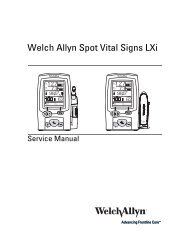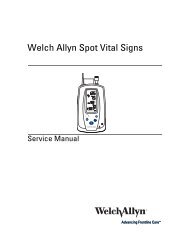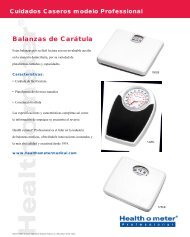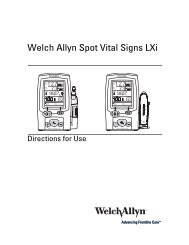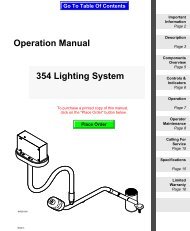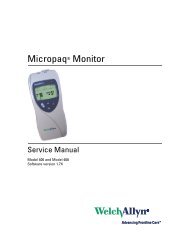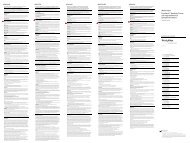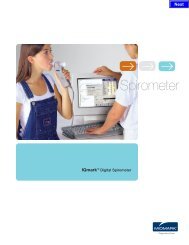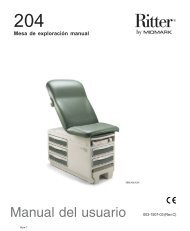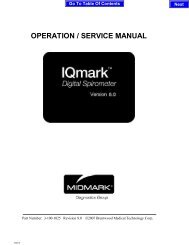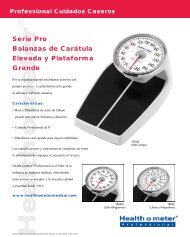Micropaq User Manual Model 406 and 408 - Medical Equipment Pros
Micropaq User Manual Model 406 and 408 - Medical Equipment Pros
Micropaq User Manual Model 406 and 408 - Medical Equipment Pros
Create successful ePaper yourself
Turn your PDF publications into a flip-book with our unique Google optimized e-Paper software.
Directions for Use Chapter 2 Monitoring 27<br />
1. Attach the SpO 2 sensor to the patient according to the manufacturer’s directions for<br />
use, observing all warnings <strong>and</strong> cautions.<br />
Each SpO 2 sensor is designed for application to a specific site on the patient within a<br />
certain size range. To obtain optimal performance, use an appropriate sensor <strong>and</strong><br />
apply it as described in the sensor’s directions for use.<br />
If excessive ambient light is present, cover the sensor site with opaque material to<br />
block the light. Failure to do so may result in inaccurate measurements. Light sources<br />
that can affect performance include surgical lights (especially those with a xenon light<br />
source), bilirubin lamps, fluorescent lights, infrared heating lamps, <strong>and</strong> direct sunlight.<br />
If NIBP will be monitored while using SpO 2 , place the NIBP cuff on a different limb<br />
than the SpO 2 sensor to help reduce unnecessary SpO 2 alarms. For optimal<br />
measurements, avoid placing the SpO 2 sensor on the same limb as an arterial<br />
catheter or intravascular line.<br />
Loss of pulse signal can occur if the sensor is too tight, there is excessive ambient<br />
light, an NIBP cuff is inflated on the same limb as the sensor, there is arterial<br />
occlusion proximal to the sensor, the patient is in cardiac arrest or shock, or the<br />
patient has hypotension, severe vasoconstriction, severe anemia, or hypothermia.<br />
2. Inspect the SpO 2 cable. Replace it if it shows any signs of wear, breakage, or fraying.<br />
Plug the cable into the sensor <strong>and</strong> the monitor.<br />
3. After the cable is connected, confirm that the monitor displays SpO 2 data within a<br />
few seconds.<br />
4. If excessive patient movement interferes with measurements, consider the following<br />
possible solutions:<br />
be sure the sensor is secure <strong>and</strong> properly applied<br />
use a new sensor with fresh adhesive backing<br />
select a different type of sensor<br />
move the sensor to a less active site<br />
The SpO2 system is designed to work satisfactorily during normal patient motion.



